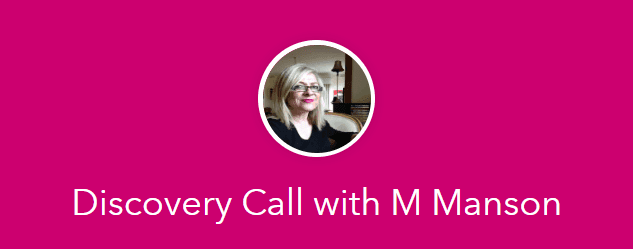 You have a successful, innovative business, doing great things for your clients but… not supercharged. Many businesses and organisations struggle with productivity, sales, keeping profits up, staff turnover and effective innovation. The common root of all these problems: people. And it’s not always because they are not smart, capable, qualified or (not usually) lazy or unwilling. The real problem in not getting the results you want is lack of direction, or to put it in business context, disconnect between Strategy and the Operations.
You have a successful, innovative business, doing great things for your clients but… not supercharged. Many businesses and organisations struggle with productivity, sales, keeping profits up, staff turnover and effective innovation. The common root of all these problems: people. And it’s not always because they are not smart, capable, qualified or (not usually) lazy or unwilling. The real problem in not getting the results you want is lack of direction, or to put it in business context, disconnect between Strategy and the Operations.
In today’s business environment, it’s not enough to create job descriptions and expect people to do their jobs, unless you want to micromanage and change job descriptions monthly or adjust expectations as the situation arises. You simply can’t afford it. You need to create an environment with simple, clear guidelines within your Competitive Strategy framework that will enable people to self-adjust their actions to always head in the right direction with agility and confidence.
This environment is your Business Culture.
The thing about Culture, from the simplest live organism like bacteria, to great civilisations and great brands that left lasting landmarks on humanity, is that it has a life of its own. Given the right environment, a Culture will subject everything in its path to its own form.
Let me tell you. No business leader or manager today can afford to micromanage people through complex rules and measuring mundane KPIs that enforce the rules. You need to urgently build a self-organising culture to move your business fast forward and in the right direction. This is particularly critical if you lead a small or medium size business and want to thrive.
Here is how to do it in six steps.
WARNING: First, step away from the toolbox and nobody gets hurt!
1. INSIGHT
 Activity: Strategic insight into a competitive potential of an organisation starts with measuring the Strategy Gap. It should comprise an audit to quantify the understanding of strategy, objectives and how they relate to individual people and their jobs. This would normally consist of two types of approaches: one on one management discussions and a confidential employee online survey. A confidential external analysis helps to objectively qualify the Gap and the level of ‘disconnect’ between Strategy and People.
Activity: Strategic insight into a competitive potential of an organisation starts with measuring the Strategy Gap. It should comprise an audit to quantify the understanding of strategy, objectives and how they relate to individual people and their jobs. This would normally consist of two types of approaches: one on one management discussions and a confidential employee online survey. A confidential external analysis helps to objectively qualify the Gap and the level of ‘disconnect’ between Strategy and People.
Outcomes: The result is that the management team is objectively aware of what people know and how they understand the company goals in the context strategy. The specific gaps clearly indicate what needs to be done to address the ‘disconnect’ and start improving engagement, productivity and value creation.
Transformation: Consciously self-aware organisation …
2. FOUNDATIONS – SHARED VISION
 Activity: To build solid Foundations of a successful, fast moving business, it is essential that Leaders create a well-defined Vision of the business’ future that will give their people and themselves a desirable and aspirational Direction.
Activity: To build solid Foundations of a successful, fast moving business, it is essential that Leaders create a well-defined Vision of the business’ future that will give their people and themselves a desirable and aspirational Direction.
There are many tools, articles and templates on the Internet that can guide you in this exercise. Or, you may try ‘Driving Competitive Impact’ program at the IDEAL Business Academy which also comes with a guide to designing a Non-Negotiable Principles System for strategic decision-making at all levels.
To support the Direction, an organisation also needs the Compass: a strategic Mission that focuses on its Competitive Advantage, Customers and differentiating activities. Importantly, it also provides clear criteria for Innovation.
Outcomes: Leaders and all people in the organisation have a clear direction and guidelines for getting there faster. Both, Leaders and Employees know what is expected and what to expect.
Transformation: Consciously self-aware organisation with … a clear focus on where it is going; with strong Leadership that people want to follow…
3. COMMUNICATION
 Activity: Communication is King! Strategy that is confined to the head of the Owner, CEO or the Strategy manager is like tree falling in the forest. Nobody cares. A communication plan is a natural pre-requisite for success. But it’s not enough to just pass the information.
Activity: Communication is King! Strategy that is confined to the head of the Owner, CEO or the Strategy manager is like tree falling in the forest. Nobody cares. A communication plan is a natural pre-requisite for success. But it’s not enough to just pass the information.
We live in the digital age that is obsessed with entertainment, ‘reality shows’ and ‘celebrities’. Leaders must be seen and heard. To build culture that engages and connects people, an above average communication plan should include five digital-age ingredients:
- The Leader’s digital story;
- Visual tools that both train and engage;
- Rolling out Red Carpet;
- On demand replay option;
- Availability 24/7 across all platforms.
Outcomes: Communication tools for internal brand marketing are developed based on the previous step of creating the Vision and Mission and decision-making guidelines. The Leader and all Managers are on the same page and equipped to communicate consistently and frequently to transform the business culture faster.
Transformation: Consciously self-aware organisation with… a clear focus on where it is going; with strong Leadership that people want to follow … Knowing what will get us there…
4. EMBEDDING A PURPOSE-DESIGNED CULTURE
 Activity: Every organisation has a culture. The difference is when Culture is built on the right foundations. These foundations were designed in the above three steps. Now it’s all about building these foundations of a purpose-focused, self-directing Culture.
Activity: Every organisation has a culture. The difference is when Culture is built on the right foundations. These foundations were designed in the above three steps. Now it’s all about building these foundations of a purpose-focused, self-directing Culture.
Here are some tips on how to implement the communication for impact and stickiness. Keep in mind: entertainment and media consumption principles of our society.
- First: Start with a hot launch the CEO message. Excite! If the CEO is not a celebrity, who is? Let people know and talk about what drives him/her and will ultimately drive their own future. It is worthwhile enlisting some professional help with crafting the message. Not every Leader is a born orator. But, ensure that you personalise CEO’s ‘campaign’. It may be ‘cleaned up’ but it needs to sound authentic.
- Next: cascading the communication through group talks allowing all managers and supervisors to take the stage and also share the load of communication. Think JAZZ with its ‘solos’ within the main theme, that together crate great and engaging piece of music.
- Finally: connecting the system by including the ‘Brand direction message’ in all induction and all internal communication processes. Every piece of training, internal or external needs to be linked to the main ‘purpose’ of the Brand. You will need to adjust behaviour using metrics system that reinforces the understanding and application of the strategic guidelines.
When we work with organisations, and help them develop their Non-negotiable Principles as a decision-making framework, we include three simple behavioural metrics in their standard project or activity sheets they already use on a daily basis. This allows to deeper imbed cultural behaviours by leveraging “lessons learnt”.
In addition, organisations using the InnoFuture Dojo online coaching platform can use its Forum to share peoples’ experiences through “Are we there yet?” discussion stream.
Outcomes: The Leader is placed in the centre of the organisational culture – leading by example. Managers are equipped in great tools and reinforce each other’s effort when people are interconnected through strategic objectives. Employees understand the direction and guidelines and the reason behind to help them connect across silos and make better, more satisfying decisions. Importantly, a decision-making Framework of ”right the first time, and if not, try again” is in place.
Creative Productivity and focused Innovation follows.
Transformation: Consciously self-aware organisation with… a clear focus on where it is going; with strong Leadership that people want to follow … Knowing what will get us there … With unique solutions … Faster, safer, more efficiently…
CHECK OUT PART 2…
In the meantime… dare to lead!
 I am the founder of InnoFuture, a growth marketing agency helping B2B Technology companies leverage the leading trends in marketing strategy and innovation to fuel their businesses.
I am the founder of InnoFuture, a growth marketing agency helping B2B Technology companies leverage the leading trends in marketing strategy and innovation to fuel their businesses.
Looking for consistent and sustainable growth? Talk to us about Boosting your core Brand strength for higher market impact in the connected age.
Margaret Manson | Chief Inspirator: M: 0407 66 11 30


